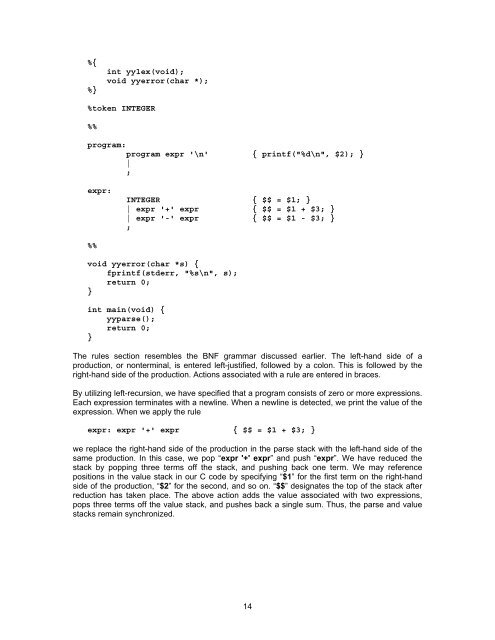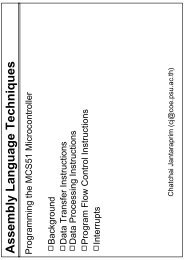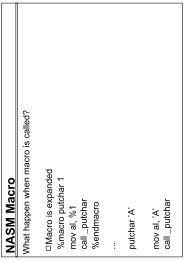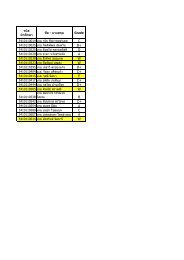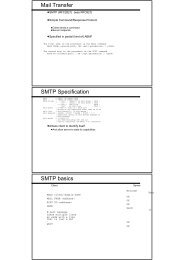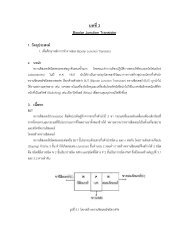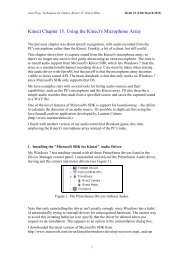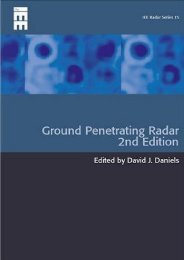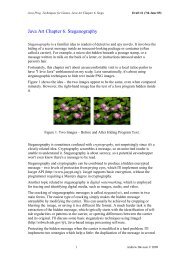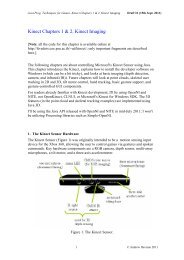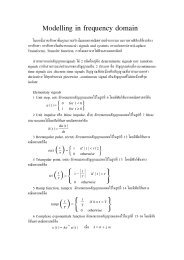LEX & YACC
LEX & YACC
LEX & YACC
Create successful ePaper yourself
Turn your PDF publications into a flip-book with our unique Google optimized e-Paper software.
%{%}int yylex(void);void yyerror(char *);%token INTEGER%%program:program expr '\n' { printf("%d\n", $2); }|;expr:INTEGER { $$ = $1; }| expr '+' expr { $$ = $1 + $3; }| expr '-' expr { $$ = $1 - $3; };%%void yyerror(char *s) {fprintf(stderr, "%s\n", s);return 0;}int main(void) {yyparse();return 0;}The rules section resembles the BNF grammar discussed earlier. The left-hand side of aproduction, or nonterminal, is entered left-justified, followed by a colon. This is followed by theright-hand side of the production. Actions associated with a rule are entered in braces.By utilizing left-recursion, we have specified that a program consists of zero or more expressions.Each expression terminates with a newline. When a newline is detected, we print the value of theexpression. When we apply the ruleexpr: expr '+' expr { $$ = $1 + $3; }we replace the right-hand side of the production in the parse stack with the left-hand side of thesame production. In this case, we pop “expr '+' expr” and push “expr”. We have reduced thestack by popping three terms off the stack, and pushing back one term. We may referencepositions in the value stack in our C code by specifying “$1” for the first term on the right-handside of the production, “$2” for the second, and so on. “$$” designates the top of the stack afterreduction has taken place. The above action adds the value associated with two expressions,pops three terms off the value stack, and pushes back a single sum. Thus, the parse and valuestacks remain synchronized.14


